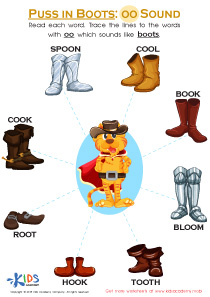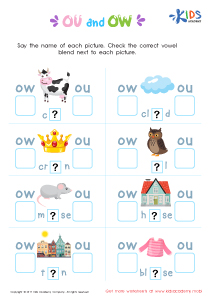Vocabulary expansion Normal Vowel Blends Worksheets for Ages 6-9
7 filtered results
-
From - To
Boost your child's vocabulary with our engaging Normal Vowel Blends Worksheets designed specifically for ages 6-9. These interactive worksheets support young learners in mastering vowel blends, a vital skill for reading and language development. Each activity is crafted to make learning fun, featuring colorful illustrations and practical exercises that encourage exploration of new words. By practicing vowel blends, children will enhance their word recognition, pronunciation, and overall language skills. Whether used at home or in the classroom, these worksheets are a valuable resource for parents and teachers looking to nurture confident young readers. Start expanding vocabulary today!
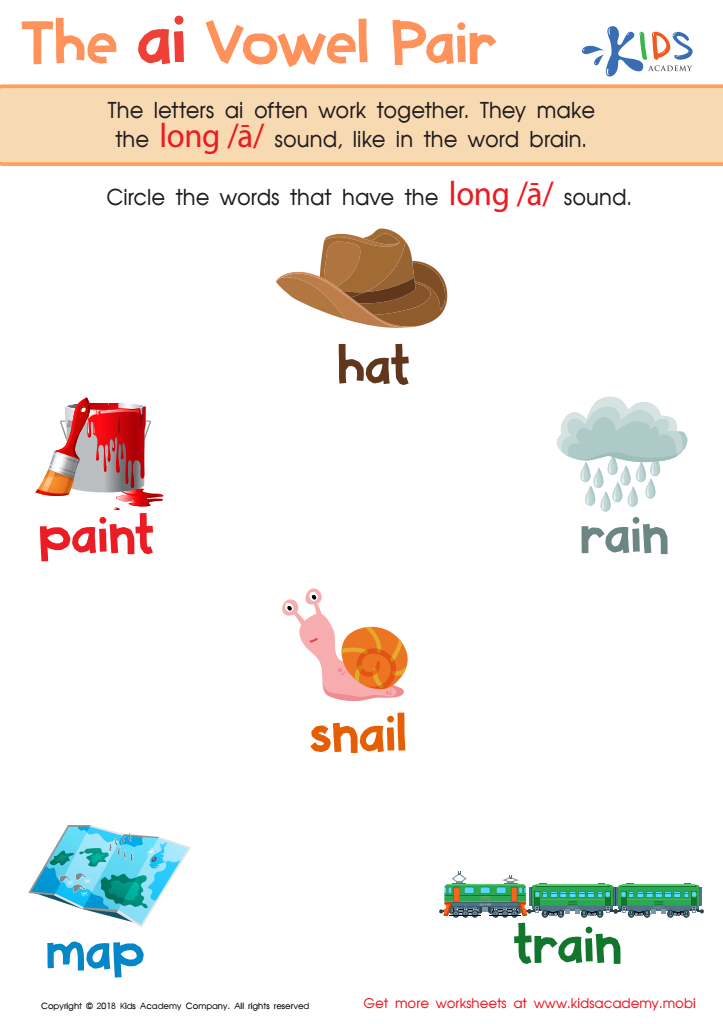

The AI Vowel Pair Worksheet
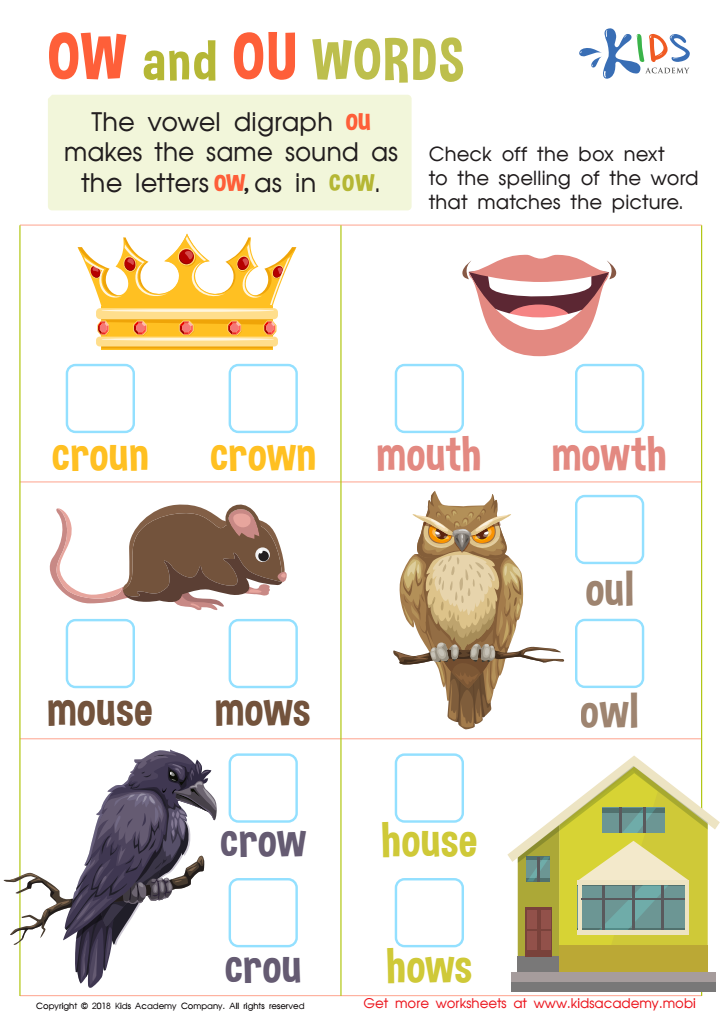

Reading: OW and OU Words Worksheet
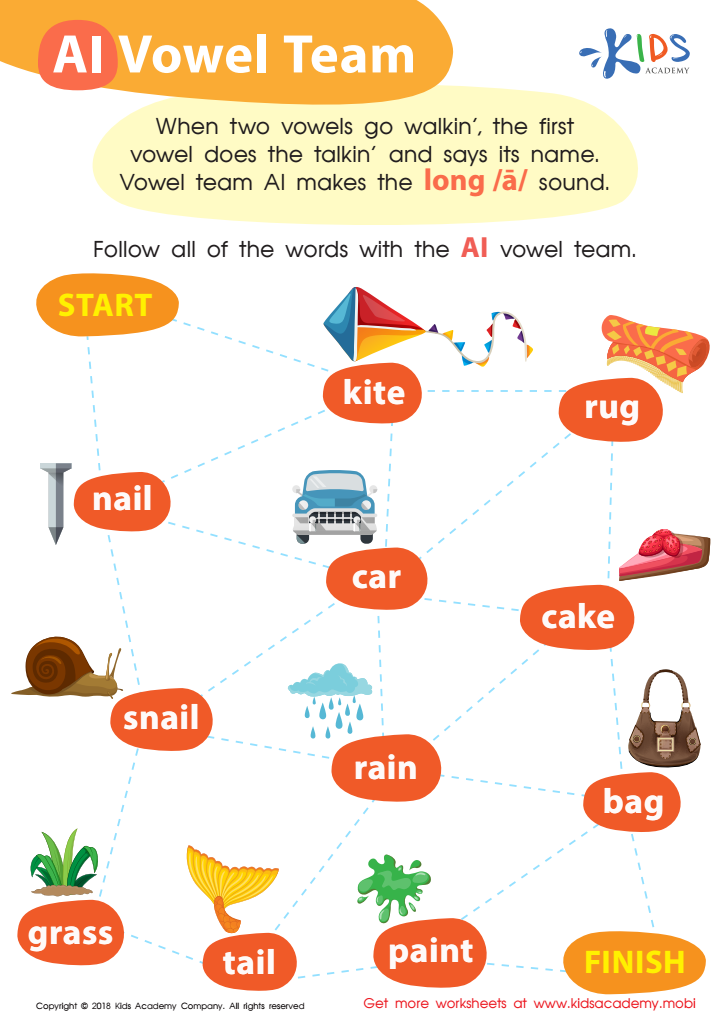

Reading: AI Vowel Team Worksheet
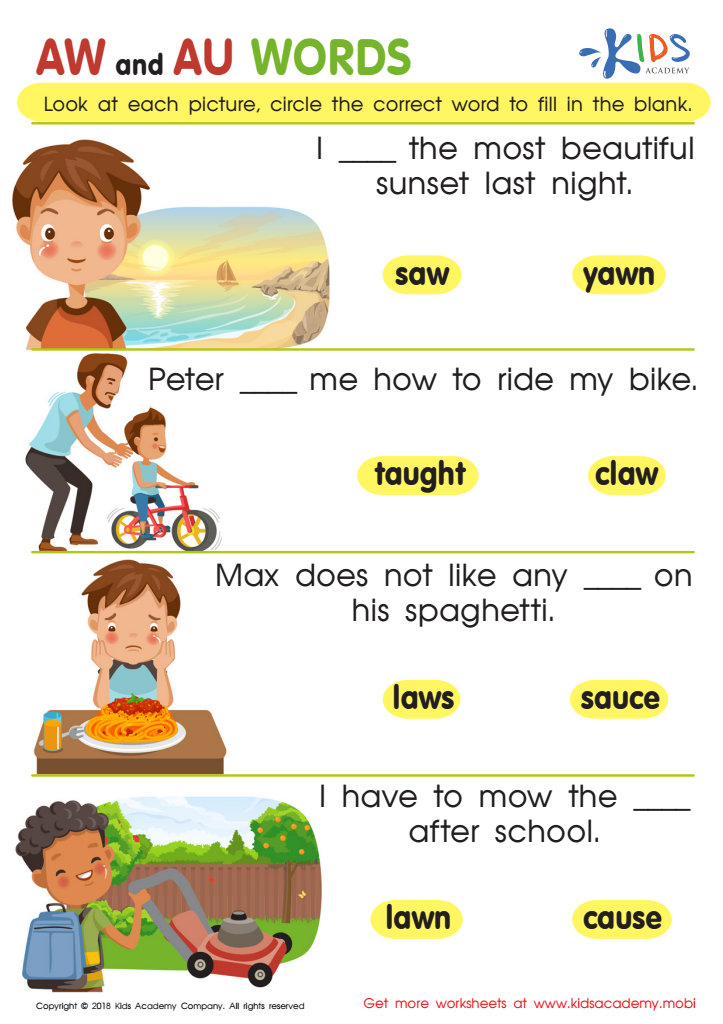

Reading: AW and AU Words Worksheet
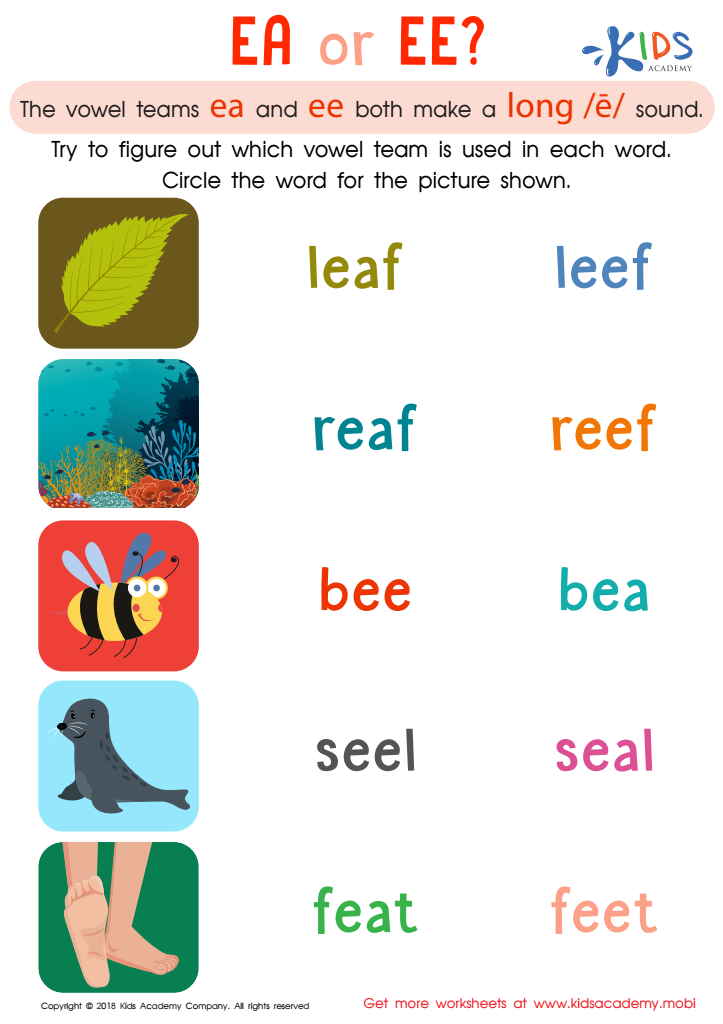

Reading: EA and EE Worksheet
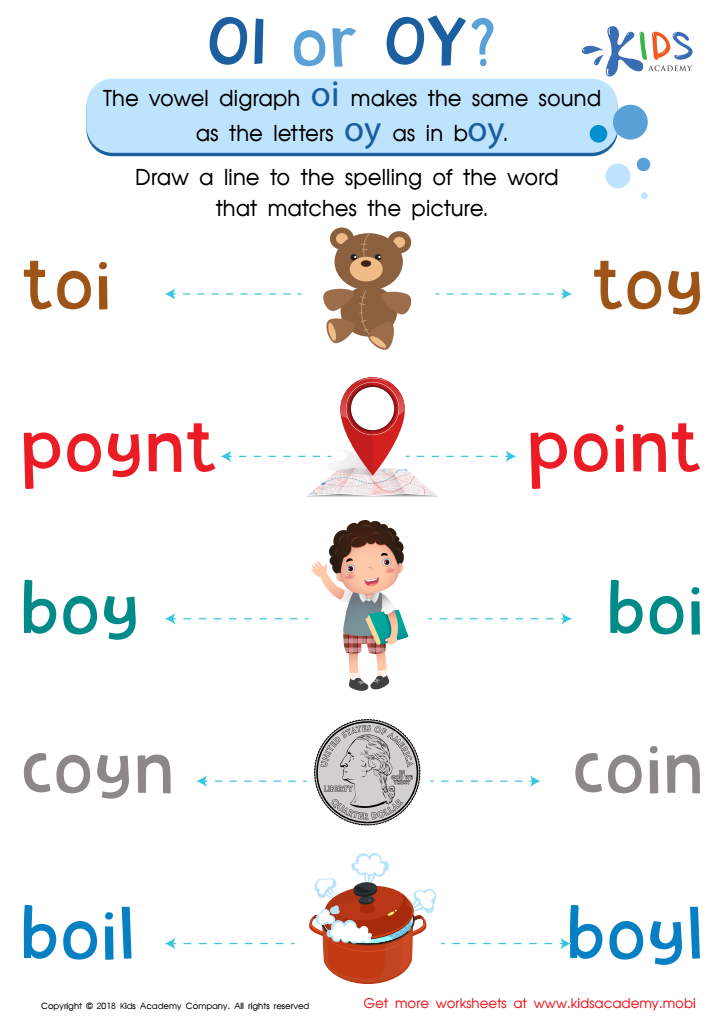

Reading: OI and OY Worksheet


Reading: EA as in Bread Worksheet
Teachers and parents should care about vocabulary expansion and normal vowel blends for children aged 6-9 because these skills are foundational for literacy development. At this stage, children are refining their reading and writing abilities, and a robust vocabulary significantly enhances comprehension and expression. Normal vowel blends, such as “bl” in "blue" or “st” in "star," are crucial as they represent the unique combinations of sounds that underpin word formation, allowing children to decode words more easily.
Understanding vowel blends boosts phonemic awareness, an essential skill for reading fluency. This proficiency not only aids in reading new texts but also encourages children to communicate effectively, listen attentively, and engage in meaningful conversations.
Moreover, vocabulary expansion nurtures curiosity and a love for learning by allowing kids to explore new ideas and concepts more freely. As children master these language skills, their confidence grows, impacting their overall academic success and self-esteem.
In summary, focusing on vocabulary expansion and normal vowel blends empowers children to become enthusiastic, competent readers and communicators, laying the groundwork for their lifelong learning journey. For teachers and parents, supporting this development is integral in providing kids with necessary tools for future academic achievement.
 Assign to My Students
Assign to My Students








